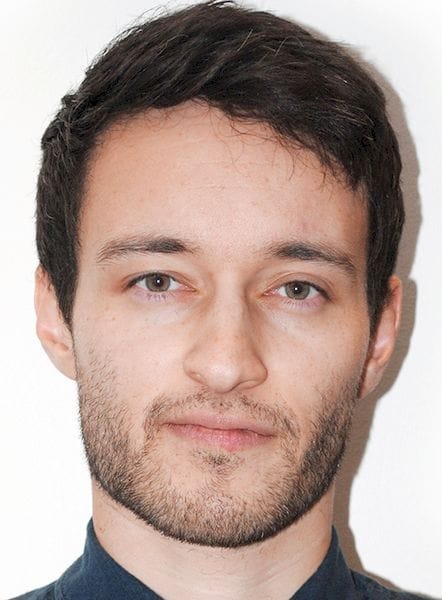
We asked Dr. Daniel Richards for his view of the future of 3D design.
Recently available 3D printing technologies are providing a means to produce astonishing new products, but this is only possible if there are software tools that permit new types of 3D designs to feed these new 3D printers.
I’m puzzled as to how traditional 3D design tools might be adapted – or even replaced – by newer approaches that can more easily design incredible 3D objects to be produced by 3D printers now emerging. To get some answers, we asked Dr. Daniel Richards of Lancaster University in the UK, who just happens to be working in this very field.
This is part 1 of a 2 part interview. Part 2 is here.
Fabbaloo: In designing an interface for “internal” 3D design, what are the major concerns? How is it different from traditional 3D design systems?
Dr. Daniel Richards: Traditional CAD systems are great for designing 3D geometries. But these systems typically work by modelling the outer faces of objects only, meaning that they assume objects are either completely solid or empty. For various fabrication processes, this method works perfectly (e.g. 3D milling, laser cutting), allowing physical parts to be created from digital descriptions of 3D faces. The problem occurs when you want to create detailed multi-material parts that have varying colour, transparency and mechanical properties expressed throughout the entire volume of the object.
At this point, commercially available CAD systems become extremely limited in helping design complex multi-material parts because of they only hold information about the outer faces of geometry.
With this in mind, the first step towards designing complex multi-material parts is to shift from traditional “boundary representations” (i.e. the method of modelling the outer faces – or boundaries – of objects only) to thinking in terms of volumetric pixels, or “voxels”. This move makes it possible to describe exotic and volumetric material compositions, beyond surface geometries.
The major challenge here is that voxel modelling systems for 3D design are under-developed since we have only recently hit the breaking point of traditional CAD for advanced AM. Notably, there is some really nice tools, such as Cuttlefish, emerging that allow users to convert scanned 3D models into voxelised objects for 3D printing. However, if you want to design new objects which have complex multi-material features (i.e. rather than replicate scanned objects) this process is still very difficult. There are three main reasons for this difficultly:
Firstly, it is technically difficult to digitally represent 3D designs that comprise hundreds of billions of voxels. Specifically, to exploit the huge design freedoms offered by new voxel printing technologies it is critical to work out new ways of digitally representing voxel data so that we don’t create huge file sizes (i.e. terabytes of data for each model!) that slow down our computers and make all design processes excruciating.
Equally, we need to think about how designers can meaningfully sculpt vast numbers of voxels, and this requires us to adopt a similar approach taken by 2D graphics in moving from raster to vector-based representations.
Secondly, it is visually difficult to understand the physical properties of voxel designs at different scales. New AM technologies make it possible to physically print multi-material parts at the micron scale (i.e. 600 x 300 DPI resolution in x-y dimensions and 14-micron layer height on the J750) meaning that designers now face a very strange phenomenon. That is, physical properties of objects that are traditionally thought of as given, such as colour, transparency and material stiffness are actually produced by the small-scale composition of different voxels.
Think of the painting technique called pointillism, but in three-dimensions! The big challenge here is that in order to fully exploit the new design possibilities offered by new printing technologies and invent exotic digital materials it is desirable to enable fine-grain manipulation of voxel designs. But, small-scale manipulations of voxels can have unpredictable “bubble-up” effects on the macro-properties of the object (e.g. colour, transparency, stiffness). So, we need to think about how designers can intuitively move between scales to allow simultaneous design of printed geometry, material properties and aesthetics.
Finally, it is conceptually difficult to understand how to interact with new forms of multi-scale, vector-based 3D models in ways that are both expressive and intelligible for designers. This final challenge is critically important and often overlooked in my opinion. On the one hand, we need to find ways of domesticating what can be complex computational abstractions and representations of 3D voxel models so that designers can understand what they are doing.
To do this, we need to avoid the temptation to naively adopt traditional CAD interface techniques that have been designed for outmoded boundary representations, but at the same time, we need to do this without throwing the baby out with the bath water!
On the other hand, we need to balance the amount of design automation required to create useful and interesting designs. That is, we need to find ways of using generative systems to manage the sheer number of design possibilities and freedoms afforded by new AM technologies, but at the same time it’s important to keep in mind that design and optimisation are not the same thing. We want tools that can super-charge creative design, not eliminate it.
This is part 1 of a 2 part interview. Part 2 is here.

